
views
Installing an Electric Cooktop
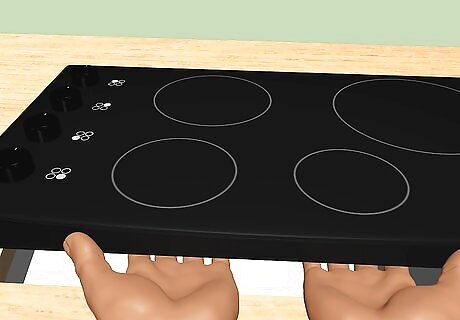
Remove the old cooktop if there is one. If you are replacing an old cooktop then you will first have to remove it. Turn off the power to this cooktop at the fuse box. Remove any caulking or attachments on the cooktop. Disconnect the wiring, remembering how the old cooktop is wired, and lift the cooktop out of the opening. You must be absolutely certain that the power is turned off to your cooktop. You can use a circuit tester to double check by touching one lead on the circuit tester to any wire that is not green or white and the other lead to a white or green (ground) wire. If the light comes on, it means the power is still on. Make sure you remember how the old wiring was connected because the new wiring will connect in the same way. You can even label wires and take a picture of the wiring before removal to help you remember. Get someone to help you lift the cooktop out of its location because they can be quite heavy.

Make sure there is enough clearance around your chosen location. Ideally you should have at least 30 inches (76 cm) of clearance above the cooktop and 1-2 feet (30-60 cm) of clearance on the sides. You must also check that there is enough space below the cooktop for your desired model. Check the manufacturer’s instructions for specific requirements for your cooktop.
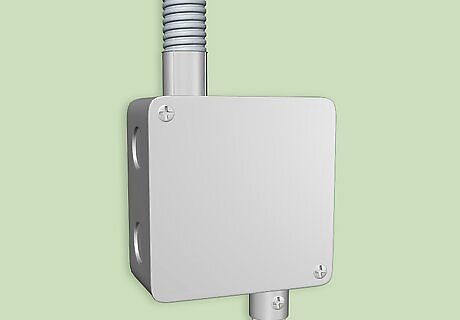
Check that the appropriate junction box exists in your desired location. Most cooktops will require a 240 VAC junction box. If you are replacing a cooktop then you probably will already have this installed. If there is no junction box then you should hire a professional to install one for you. You must also check that the old cooktop has the same amperage as the new cooktop or else the wiring may need to be performed by a professional. Many old cooktops have only a 30-amp circuit while modern cooktops often have a 40-amp or 50-amp circuit.
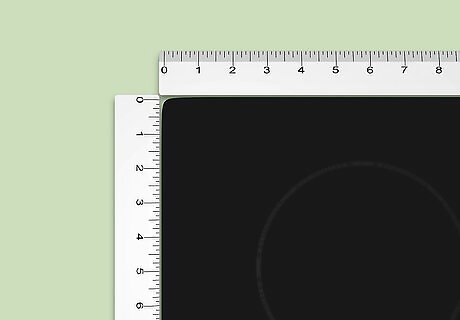
Measure the dimensions of the cooktop and make sure it will fit if there is an existing hole. If you have removed a previously installed cooktop then there should already be a hole so you must check the dimensions of the new cooktop to see if it will fit. Measure the length and width of the cooktop and subtract ½ - 1 inch (1.25-2.5 cm) from each side to account for the lip that will overlap the countertop.
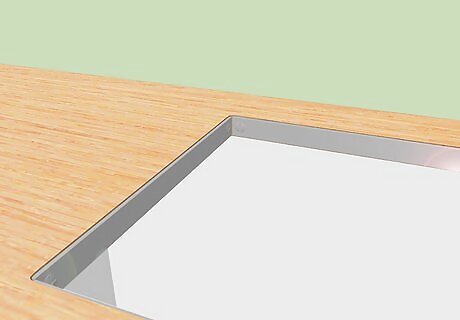
Alter the hole in the countertop to fit the cooktop. The hole needs to be the size of the cooktop minus the ½ to 1 inch for the lip. If there is no hole currently or if the hole is too small then you will need to cut a hole or make it larger. If the hole is too big then you can screw shims (long flat metal pieces) into the sides around the opening. You may need to remove tile around the area before cutting through the counter with a saw. You will need a wet saw to cut through a granite countertop. Alternatively hire a professional for this job because granite can be difficult to cut cleanly. You should also seal the stone before placing the cooktop into its location.
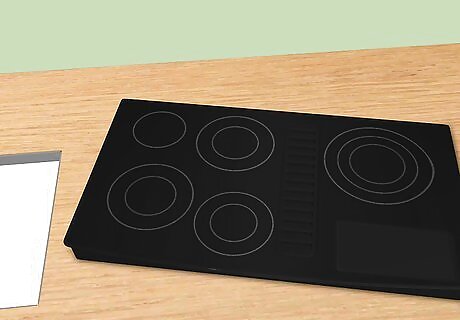
Detach any removable pieces on your cooktop to make it easier to set in place. Your cooktop may have removable burners, screens or other parts that can be set aside for now. You should also remove any packaging that may be around the cooktop.

Install the spring clips. These hold the cooktop in place. You should hang them from the upper edge of the cutout and then secure them with screws. If you have a granite counter then you should secure the spring clips using double-sided adhesive tape rather than screws.
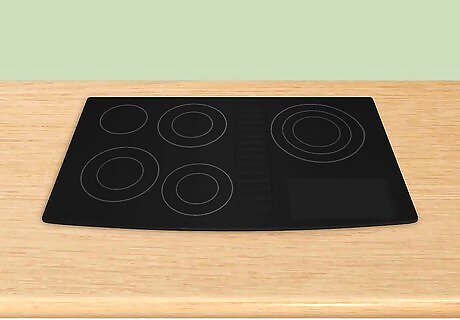
Lower the new cooktop into place. Lower the new cooktop into the opening, making sure to draw the wires through the opening first. Press down until it clicks into place in the spring clips. If you had to remove tile then you will have to reinstall the tiles to lay flush with the edges of the cooktop before laying it into place. You may need to wait for 24 hours for the tiles to set before putting the cooktop into place.
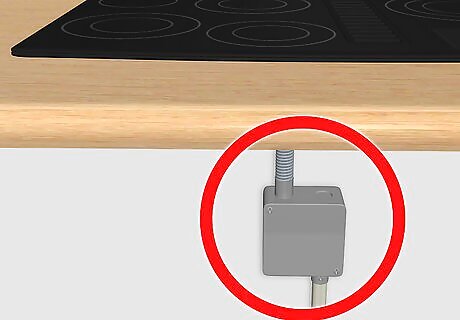
Connect the wires of the new cooktop to the power supply. The power must still be off when you do this to prevent injury and shocks. Connect the wires of the cooktop to their corresponding wire in the power supply. The red and black wires (can also be other colors) are the hot wires which carry electricity to the appliance. Connect the red and black wires on the cooktop to the red and black wires in the power supply box. The white wire is the neutral wire, which completes the circuit. The white wire on the cooktop will connect to the white wire in the power supply. The green wire is the ground wire, which grounds the circuit. Connect the green wire on the cooktop to the green wire in the power supply. Connect all wires together using a wire nut, which is like a little cap. Line up the wires next to each other and then twist the wires around each other. Screw the wire nut onto the twisted wires. The wire nut protects them from touching other bare wires, preventing potential fires.
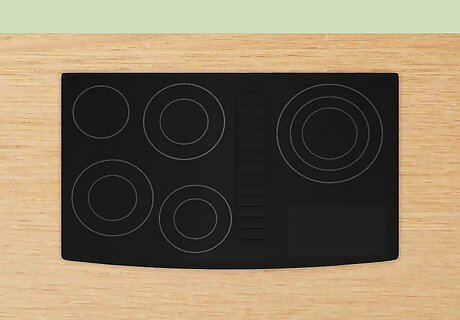
Install the removable pieces of your cooktop. Put back any burners, screens or other removable parts.
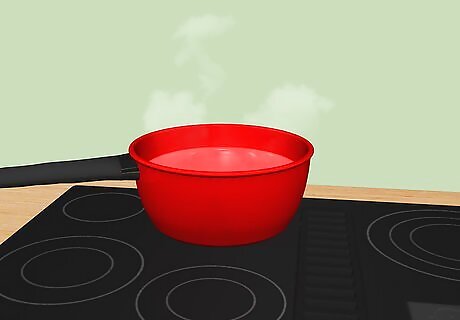
Turn the power back on and test the cooktop. Flip the breaker back on and turn on the cooktop to check that everything is working well.
Installing a Gas Cooktop
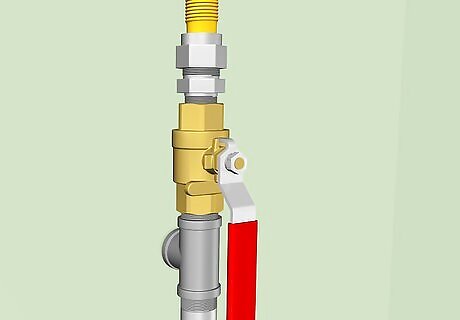
Make sure you have a gas line. A gas cooktop will require a gas line to bring fuel to the burners. If you are replacing an existing gas cooktop then you should already have a gas line installed. If you do not have a gas line then you should hire a professional to install one for you. It is particularly important for a gas line to be installed properly because leaks can cause fires and be dangerous for people breathing in the gas.
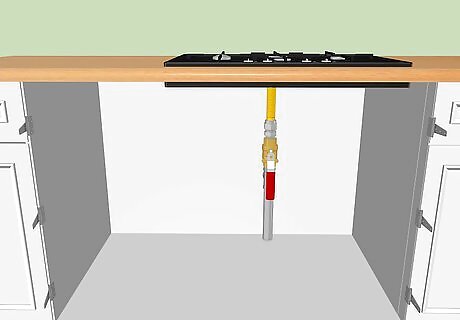
Remove the cabinet doors and anything inside the cabinets. Removing the doors and drawers can help make it easier to access the space under the cooktop. You will also need to remove any items from the cabinets to access the gas line and hose. To remove cabinet doors you can unscrew the hinges holding them in place.
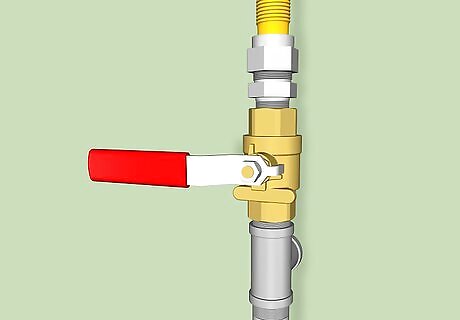
Turn off the gas flow to an existing gas cooktop. There will be a small valve where the flexible hose of the cooktop attaches to the built-in gas line of the house. Turn this valve so that it is perpendicular to the hose, or so that it sticks out to the side. If you do not close the valve properly, it will release gas when you unhook the hose and can cause suffocation and/or fires. When the gas line is open the handle on the valve will be pointing in the direction of gas flow. It is very important to turn this valve 90 degrees to close the valve.
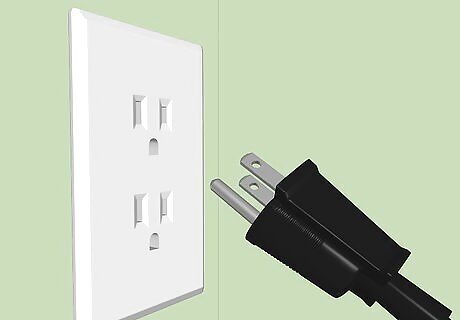
Unplug the power cord. Many gas cooktops have power cords to provide electricity to light the burners. You must unplug this power cable from the outlet before proceeding.
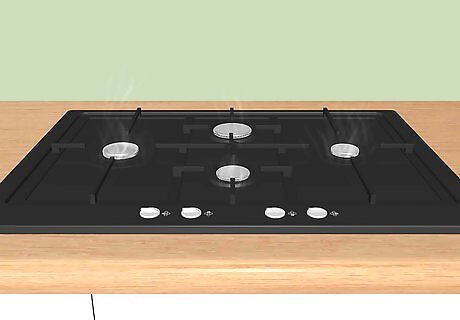
Turn on all your burners for a few seconds. Even though you have switched off the gas valve, there may still be gas trapped in the hose. Turn on all the burners to release this trapped gas. Do not light them. This will release all the extra gas after a few minutes. Turn on your range hood while you have the burners on to disperse all the gas that is released.
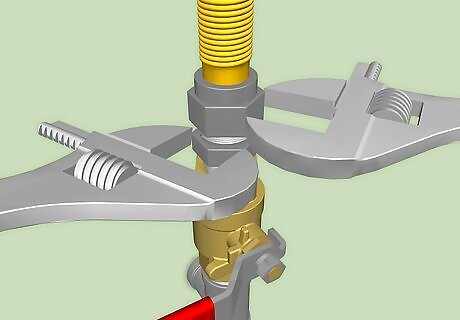
Disconnect the flexible gas line from the wall using two wrenches. Take one wrench and set it on the nut of the flexible gas hose and take the other wrench and set it on the nut on the wall hose. Hold the wrench connected to the wall hose to keep it in place. Turn the wrench attached to the flexible gas hose counterclockwise to unscrew. Continue turning counterclockwise until the hose is completely detached from the wall pipe. Some wall pipes will have a special fitting that goes between the wall gas pipe and the flexible hose pipe. Make sure you leave this fitting in place when unscrewing the hose.
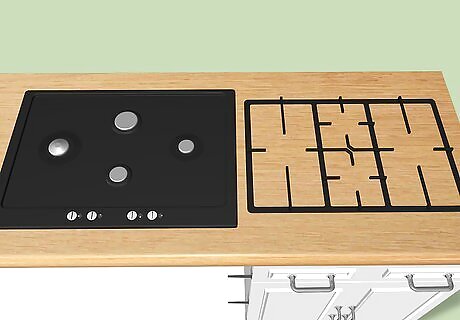
Remove any loose parts from the cooktop. Remove the burners, screens and any other removable pieces before proceeding. This will make it easier to move the cooktop around.

Remove the brackets holding the existing cooktop in place. Unscrew the brackets from the underside of the existing cooktop.
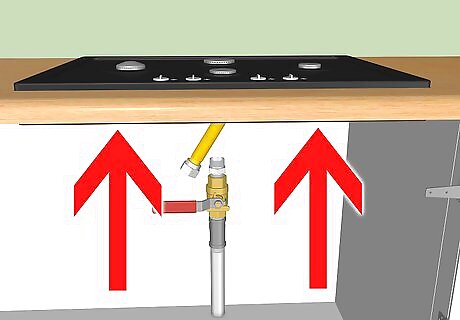
Push up from underneath to lift the cooktop from the countertop. Remove the cooktop from the counter and place it somewhere safe. Don’t forget that the hose is still attached when you are pulling it out of place. Place it upside down when you are setting it aside to keep it from being damaged.
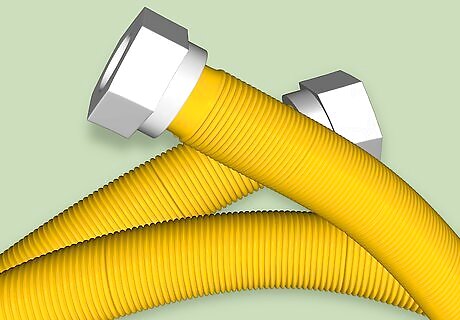
Remove the hose from the cooktop. If you will be reusing the hose for your new cooktop then you should unscrew it from the old cooktop. Use two wrenches to unscrew, attaching one to the cooktop and the other to the nut on the flexible hose. Turn the wrench attached to the flexible hose counterclockwise to unscrew.
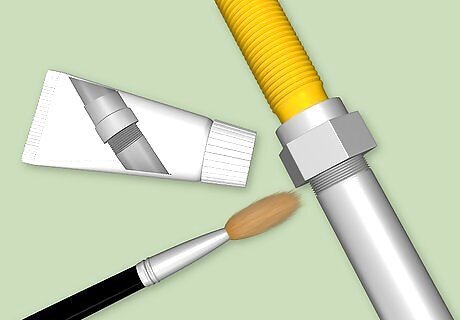
Attach the hose to the new cooktop. Apply pipe sealant to the threads where the hose attaches on the cooktop. Brush the sealant liberally on all the threads but be careful not to get any sealant inside the hose. Use the wrench to screw the hose to the cooktop. Make sure the threads on the cooktop are completely covered with sealant because this will prevent gas leaks later on. Some cooktops come with a regulator to make sure the gas pressure remains constant. If there is one you will attach the regulator to the cooktop threads and the hose to the regulator. Make sure you apply sealant to the threads before screwing the regulator and hose into place. Use a small paintbrush to apply the sealant if your container does not come with one.
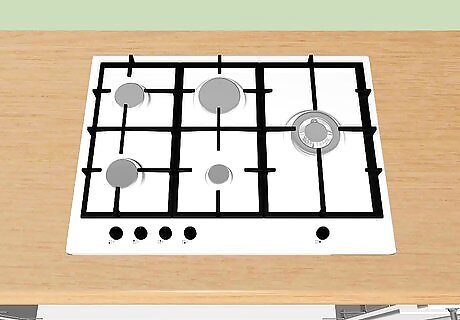
Place the new cooktop into place in the counter. Slide the cooktop into place carefully making sure you do not damage any of the valves on the bottom. You should also put the hose through the opening before sliding the cooktop into place.
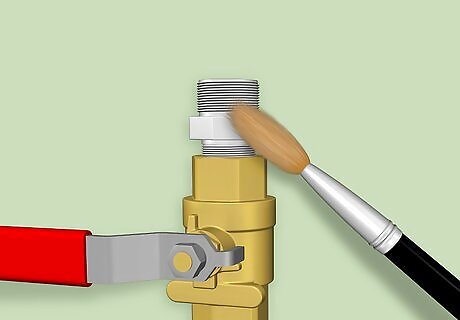
Attach the flexible hose pipe to the built-in wall pipe. Apply sealant to the threads on the fitting on the wall pipe. Then screw the flexible pipe into place using a wrench. Make sure you tighten the pipe securely. Make sure you get the sealant spread all the way around the threads to prevent leaks.

Mix a solution of soap and water. Make a solution of half dish soap and half water to test if there are any leaks. Stir the mix well and then either spray on all the connections or use a paintbrush to apply to all the connections. Turn on the valve to the built-in pipe by turning the valve so that it points in the same direction as the flow of gas. Check if any bubbles are forming at any of the connections. You should also make sure that you do not smell any gas. Both of these would signal that there is a leak in the connections. If there is a leak then immediately turn off the valve. Unscrew the connections, apply more sealant, and then reconnect. Test again using the soapy water mixture. Check several times to make sure there really are no leaks. You must also make sure you check every connection that you have made.
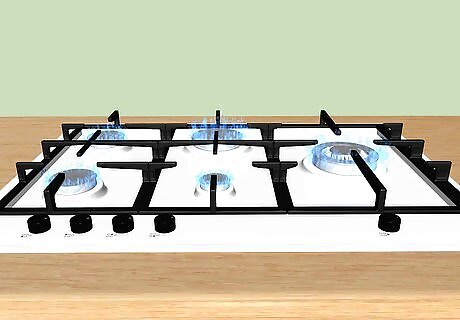
Turn on the burners to check that everything is working. If there are no leaks from your soapy water test then try turning on the burner. It may take a few seconds for the gas to come through and light because you first need to push out the air in the hose. You may smell a little gas before it lights so make sure the range hood is on before lighting. If it doesn’t light after 4 seconds, turn off the burner and wait a few minutes before trying again.
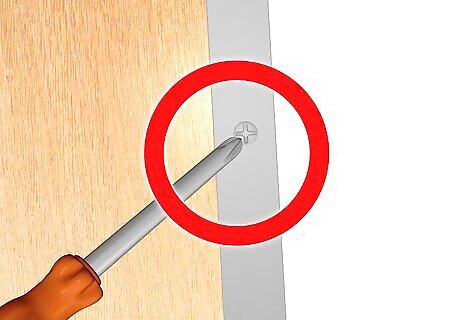
Reattach the brackets connecting the cooktop to the counter. Now that the cooktop is definitely working, reattach any brackets to connect the cooktop to the counter. Your gas cooktop is now fully installed. Reattach any cabinets or drawers that you previously removed and replace all the items inside the cabinets.
Choosing a Cooktop
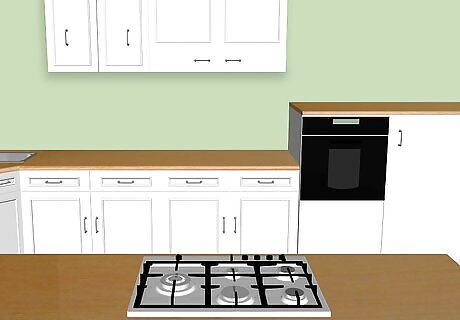
Choose a cooktop when you want your oven separate from the cooktop. Cooktops can be useful because you put them in an island or peninsula. They are also helpful when you want to install a built-in oven, which is easier on the back than a normal oven. Cooktops also allow two people to work with separate appliances at the same time. Cooktops are also less visible than normal ranges because you can install them virtually flush with the countertop. Cooktops can also be easier to clean than normal ranges.
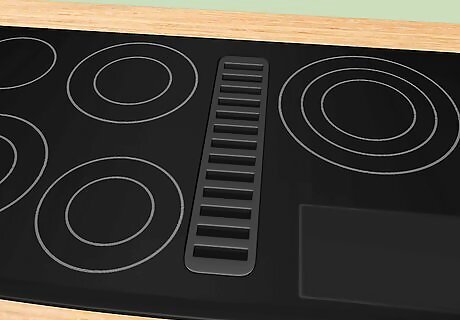
Install a downdraft cooktop to avoid having an exhaust hood overhead. If you have want to install your cooktop over an island and do not wish to have an exhaust hood then you can choose one that comes with downdraft ventilation. This kind of ventilation brings the air from the surface to down below the cooktop. Some cooktops come with telescoping vents that rise above the cooktop while cooking and then can be pushed below the surface between meals.
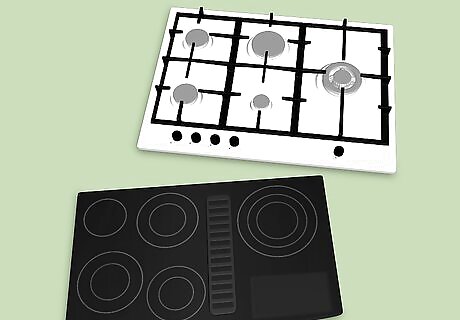
Choose between a gas or electric cooktop. Traditionally gas cooktops were chosen because they provide an immediate response once lit and they can be seen for adjustments. However, modern electric cooktops also gain heat very quickly and come in very low heat versions. You should also look at style, size, number of burners, color, cost, materials and safety features when deciding on a cooktop. Examine the cost of operation when choosing between gas and electric. You can also compare the prices of gas and electricity that will be used for your cooktop.
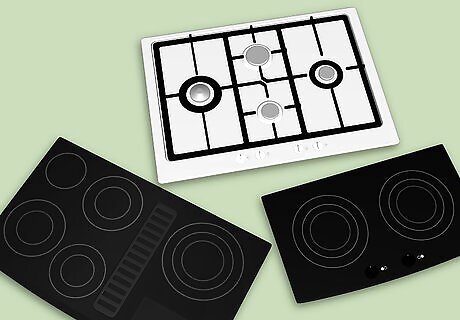
Decide how many burners you need. In most cases of typical family cooking a four burner unit would be sufficient. However, if you host parties or family gatherings, or if you routinely host people at your home, additional burners could be incredibly useful. Decide on how many burners you will need for your particular uses.
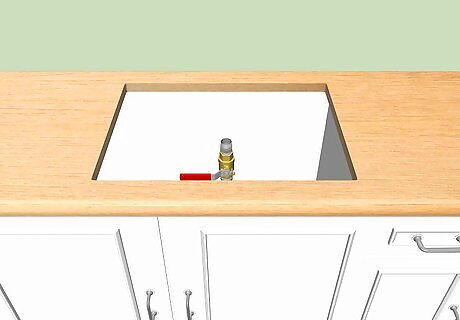
Choose a cooktop that will fit into the space. If you are replacing an old cooktop, check to see that the new cooktop will fit in the place of the old cooktop. If it is a different size then you should make sure there is space to cut the correctly sized hole for the new cooktop.

Consider the financial implications. Gas stoves can be a little more expensive to purchase but will usually cost less in the long run because fuel is cheaper than electricity. You should also consider the costs of installing wiring (for electric stoves) or gas lines (for gas stoves) if there is no wiring or gas lines to begin with.










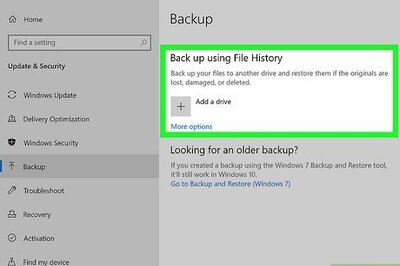

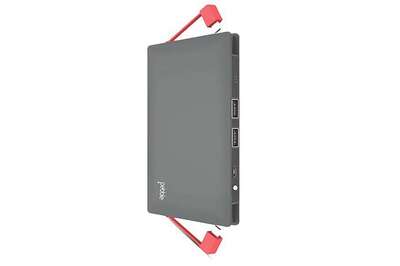






Comments
0 comment